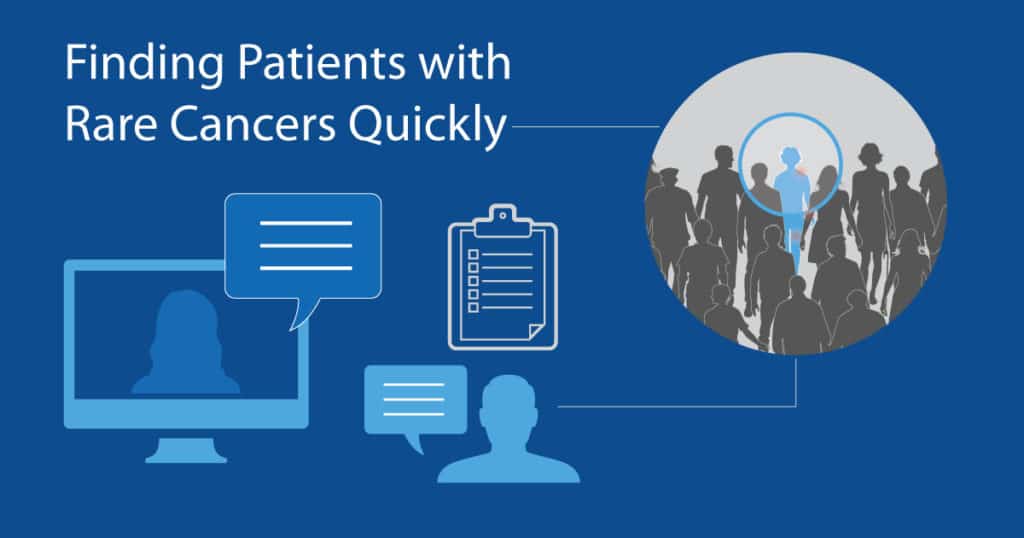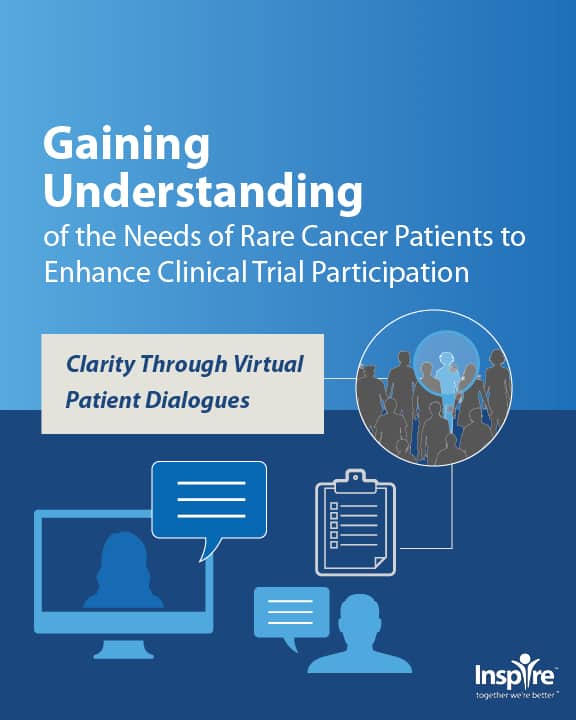Finding Patients with Rare Cancers Quickly

Almost one-third of all cancer deaths are caused by rare cancers but rare cancers represent only between 23.4% and 27% of all cancer cases.1 Between 25 and 30 million Americans and around 30 million people in the European Union live with rare diseases.2 Rare cancers are classified under rare diseases and are defined by the EU Society of Medical Oncology as having an incidence of less than six occurring per 100,000 persons per year.3 The National Cancer Institutes define the incidence of rare cancers as 15 per 100,000 persons per year.4
One reason behind this high mortality rate is delays in diagnosis. Diagnosis of rare conditions can be a lengthy process, taking an average of eight physicians, two to three misdiagnoses over almost 8 years. Multiple incorrect or late diagnoses can be deadly for people with cancer.
Another reason is that for many of these cancers, there are very few, if any, clinical experts or Centers of Excellence. In a 2010 article in the journal Health Affairs, Amy Marcus described the scarce resources patients with rare cancers and their caregivers face:
“When we asked about how gallbladder cancer patients fared on [a list of chemotherapy] drugs, the doctor’s reply was chilling. Even major cancer centers like the one in Boston where my mother was treated saw perhaps only a handful of patients every year with her type of cancer, and the centers didn’t pool data about patient outcomes or response to drugs. Few researchers studied such a rare cancer, so doctors still had no idea what drove the disease…”5
The lack of research studies to guide decision-making can lead to increased uncertainty and anxiety for patients and caregivers, Marcus said.
“My mother’s cancer was very rare: fewer than 10,000 people in the country are diagnosed every year with gallbladder and bile duct cancers. That means that the drug companies who develop most of the new drugs usually can’t afford to focus on these types of cancers; the market is too small, and the cost of developing a drug is so high. Researchers with novel ideas or who show interest in these usually overlooked cancers find it exceedingly difficult to get support from drug companies or the government to do research.”5
As a result, an analysis in 2014 determined that 25% of 1,017 rare cancer clinical trials were discontinued due primarily to poor recruitment.6
Yet research on rare cancers like retinoblastoma and chronic myeloid leukemia has been instrumental in identifying genes involved in cancer development and biology.7 In fact, cancers that have long been considered common are now being reclassified. Various national and international genome projects have clarified that common cancers like melanoma are actually a group of rare cancers, each with different genomic drivers, like BRAF or NRAS mutations.8
The pharmaceutical industry can better serve patients with rare cancers. Today we share a client case study, Gaining Understanding of the Needs of Rare Cancer Patients to Enhance Clinical Trial Participation. The first hurdle, finding hard-to-find patients with rare cancers, was quickly overcome by engaging Inspire.
Inspire offers a trusted community to patients and caregivers. Our goal with this blog, this website and our content is to provide the life science industry access to the true, authentic patient voice. In so doing, we support faithful operationalization of patient-centricity. Take a look at our case studies, eBooks and news outlet coverage.
Reference:
1Loggers, E. T., & Prigerson, H. G. (2014). The End-of-Life Experience of Patients With Rare Cancers and Their Caregivers. Rare Tumors, 6(1), 5281. http://doi.org/10.4081/rt.2014.5281
2https://rarediseases.info.nih.gov/diseases/pages/31/faqs-about-rare-diseases
3 http://www.rarecancerseurope.org/About-Rare-Cancers
4 Greenlee, R. et.al. (2010). The Occurrence of Rare Cancers in United States Adults, 1995-2004. Public Health Reports (Washington, D.C. : 1974), 125(1), 28–43.
5 Marcus, A. (2010). The loneliness of fighting a rare cancer, Health Affairs 29(1). https://doi.org/10.1377/hlthaff.2009.0470
6 Kasenda,B. Et.al. (2014). Prevalence, Characteristics, and Publication of Discontinued Randomized Trials. JAMA. 2014;311(10):1045–1052. doi:10.1001/jama.2014.1361https://jamanetwork.com/journals/jama/fullarticle/1840235
7 http://www.thelancet.com/journals/lanonc/article/PIIS1470-2045(00)00273-4/fulltext
8 http://www.thelancet.com/pdfs/journals/lanonc/PIIS1470-2045(15)00485-4.pdf






